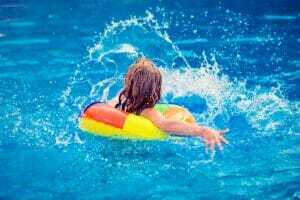 Here in South Florida, swimming is a normal activity year-round for both kids and adults. Taking in dip in the ocean or doing a cannonball into the pool should be fun and carefree, but as we all know, the dangers of drowning are always present. What you may not know, however, is about the risks of secondary drowning and dry drowning.
Here in South Florida, swimming is a normal activity year-round for both kids and adults. Taking in dip in the ocean or doing a cannonball into the pool should be fun and carefree, but as we all know, the dangers of drowning are always present. What you may not know, however, is about the risks of secondary drowning and dry drowning.
Unfortunately, a recent tragic incident in Texas that involved the death of a four-year old boy, Frankie Delgado, made national news bringing increased awareness to secondary drowning. The young boy was not in the water when he died, but his last breath actually occurred several days after spending time in the water. Though it is tragic, his story serves to remind us about the dangers of this type of drowning.
Dry Drowning or Secondary Drowning?
Oftentimes, the terms “dry drowning” and “secondary drowning” are used interchangeably, but there is actually a difference between the two.
Dry drowning usually occurs right after exiting the water when a child takes in a small amount of water through the nose or mouth. This causes a spasm in the airway, which then causes the airway to close up making it difficult to breath.
Secondary drowning may occur hours, or in Frankie Delgado’s case, days after being in water. This type of drowning happens when a little bit of water gets into the lungs and causes an inflammation or swelling that makes it difficult for the lungs to transfer oxygen to carbon dioxide, and vice versa.
Both dry drowning and secondary drowning can cause trouble breathing, or even death, and should be taken seriously by parents.
Symptoms of Dry or Secondary Drowning
If your child exhibits any of these symptoms after spending time in the water, especially if there was a water rescue situation and your child was struggling to swim, contact 911 or take your child to an emergency room or clinic.
- Coughing: Any time that a child is pulled from the water and is excessively coughing, this could be a sign that he/she ingested water in the airways.
- Labored Breathing: If your child seems to be having difficulty breathing after emerging from the water, pay attention.
- Sleepiness/Forgetfulness/Change in Behavior: Any sudden change in your child’s behavior, especially if they seem sleepy or foggy after being in water could mean that there is a lack of oxygen in his/her body.
- Vomiting: If your child is vomiting or has diarrhea after swimming, it could mean that their body is experiencing a reaction to an obstructed airway.
Prevention of Drowning
As with prevention of traditional drowning, you can help prevent dry drowning and secondary drowning by ensuring that your children are properly trained in swimming. Swim lessons and flotation devices for weaker swimmers are important parts of drowning prevention. Parents should always pay close attention any time that children are in water, no matter the level of swimming capability their child has.
If you feel that your child has experienced a serious water-related injury due to the negligence of someone else, a personal injury attorney may be able to help you seek compensation for economic and non-economic losses.
References:
What Parents Need to Know, Look for to Prevent ‘Dry Drowning’. (2017, June 12). Retrieved June 13, 2017, from http://wnep.com/2017/06/12/what-parents-need-to-know-look-for-to-prevent-dry-drowning/
Mauer, E. D. (2016, June 13). Dry Drowning: Know the Signs. Retrieved June 13, 2017, from http://parents.com/kids/safety/outdoor/dry-drowning/


